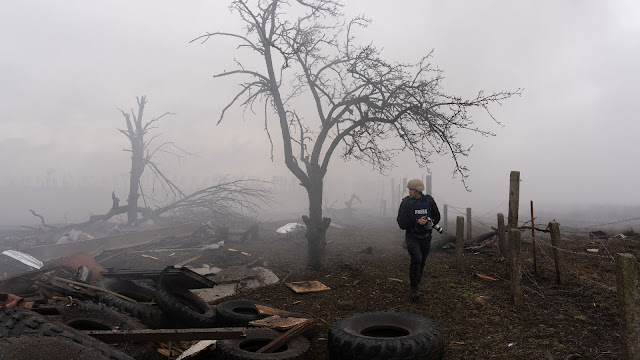Zombie Dinosaur!: "The Plague of Madness"
by Conor Bartol

When Halloween rolls around I always look for something to really scare me, something that will give me the visceral and disturbing thrill of good horror, and this year I find myself turning to the Genndy Tartakovsky’s Primal episode “Plague of Madness.” If I were to sum it up in two words, it would be these: “zombie dinosaur.”
The premise is simple (and cool as hell), but more than any other zombie story I know. “Plague of Madness” displays the full body horror and tragedy of zombiism in a terrifying and tightly written twenty-two minutes. If “zombie dinosaur” has already convinced you to watch this show, then I encourage you to stop reading and do so immediately, because I am about to spoil the entire episode.
Primal is about a caveman named Spear and a T-Rex named Fang. United by tragedy, they band together to survive a brutal and savage prehistoric world. In its first season Primal has little dialogue, instead conveying its story through beautiful animation and sound design. It is primarily episodic, with each episode being a new standalone adventure for Spear and Fang. Season one, episode seven, “Plague of Madness,” is simply the most horrifying of these many adventures.
Despite being the protagonists, Spear and Fang are nowhere to be found in the first act of the episode. We instead see a happy group of Sauropods eating trees and fruit by a pond, and we linger on their peacefulness and content. That is, until an infected dinosaur stumbles into the clearing and bites one of them on the leg. This is where “Plague of Madness” starts its focus on the body horror of zombiism. In minutes, the healthy Sauropod turns a sickly green, its flesh begins to slough off and, and mucus and tears running down its face. It desperately gulps pond water, only to vomit a stream of blood. Then, it flies into a mad rage and slaughters the rest of the herd, biting and stomping until they are all dead.
In Primal, violence rarely signifies anything beyond “eat or be eaten.” The Mad Sauropod’s homicidal rage is shocking due to its violence, but also due to its senselessness. The violence is made more disturbing because it is not for food or out of self-defense, it is for no reason at all. In a world of predator and prey, such purposeless carnage is made even more perverse.
When Spear and Fang do arrive, the episode turns into a chase as they flee the Mad Sauropod. Its sheer size and speed make it unstoppable, and despite Spear and Fang’s many triumphs in the series thus far, there is no amount of violence that can stop the Sauropod. It is similar to the hordes of zombies that threaten the protagonists in other stories, an unstoppable force that can only be escaped, not defeated, but this time concentrated into one single goliath zombie.
As the chase progresses, the body horror is taken even further. When it gets trapped in a tight canyon, the Mad Sauropod struggles to get free until it rips the skin off its ribs in order to get free, revealing nothing but bones and a hollow space beneath. When it pursues them into a lava field, the Mad Sauropod is plunged again and again into the molten rock, its skin burning away. One shot that stands out to as an encapsulation of this is the Mad Sauropod leaping at its prey, rips exposed, tongue lolling out grotesquely, plumes of lava erupting around it as it bears down on them in a way no animal its size should be able to move.
Eventually, the Mad Sauropod succumbs to the lava, limbs flailing and burning away, and it unleashes a scream of agony as it is turns to ash as Spear and Fang watch. Despite their survival, there is no celebration for Spear and Fang as the Mad Sauropod dies. It was not some predator hunting for prey, it had become a creature of mindless violence enduring unfathomable pain that would only end with its death. While it was a fearsome and repulsive enemy, the Mad Sauropod was as much a victim as anyone else. Seeing their transformation from a peaceful animal to a bloodthirsty creature is genuinely upsetting. It is a reminder that the true horror of this kind of zombiism is not dying, its continuing to live even as your body decays and you are driven to atrocious deeds, and the only hope is death. It is also representative of a larger terror, that no matter how well you can survive and thrive in this world, there is always the chance of some unjust and horrible thing falling upon you, one you cannot fight.
The last few shots of the episode are Spear watching a cooling ember of what was once the Sauropod float into his palm, then a long look at the glowing lava field and a fade to black. Spear and Fang were not victors, they merely escaped, and through pure good fortune. They linger on the memory of the Sauropod because its death was tragic in and of itself, but also because it represents and even larger terror: that, despite all their might, Spear and Fang still live in a cruel, frightful world, where no spear or fang could be any defense against something as horrible as the Plague of Madness.



Comments
Post a Comment